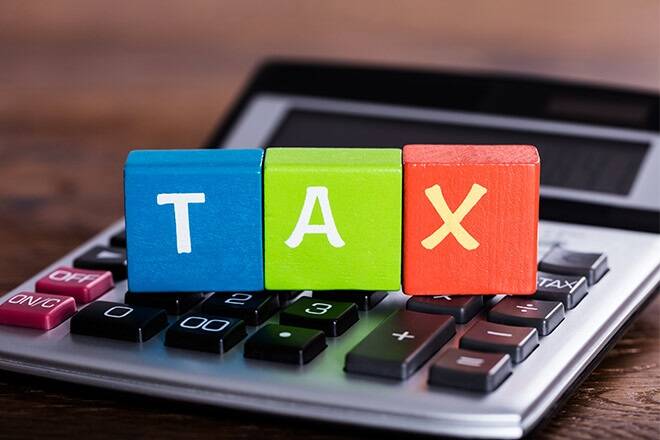This article has been written by Oishika Banerji of Amity Law School, Kolkata. This article serves as a guide to the online payment of road tax for its readers.
It has been published by Rachit Garg.
Table of Contents
Introduction
To fund the upkeep of India’s road infrastructure, the Indian government levies a tax on the purchase of a new car and therefore, it is common knowledge that any person who buys a vehicle is required to pay road tax. The road tax is a state-level tax, meaning that each state’s government imposes it separately. The procedures and regulations for collecting the road tax vary from one state to the other. The amount of tax also varies because different states impose taxes at varying percentages. The Central Motor Vehicles Act, 1988 mandates that the entire road tax must be paid upfront if a car is used for longer than a year. This article serves as a guide for online payment of road tax to its readers, as with the intervention of digitalization, payment of tax has been made easier as it has adopted the online mode as well.
All you need to know about road tax
India is a nation with a sizable network of highways connecting both states and various cities within each state. The state government of every state imposes a road tax or motor vehicle tax on the purchase of every vehicle in the nation, whether it be a commercial or personal vehicle, in order to fund the construction and maintenance of these roads as well as formulate the enabling provision of various safety and emergency services alongside these roads. The road network is expanded, maintained, and upgraded with the amount collected in the form of road taxes. In essence, the Vahan tax is the government reclaiming money used for various tasks, including providing security and recovery services on Indian streets.
When you buy a new car from a showroom, you’ll notice that the ex-showroom price listed in the brochure or on the company website is, depending on the state in which you reside, (around Rs. 15000 or roughly 10% lower). The base manufacturing cost of a bike or four-wheeler is added to registration fees, road tax, and insurance, bringing the final cost up to around 10% of the vehicle charge. While insurance and registration go without saying, car owners must also pay a road fee to the state government in order to operate their vehicle there.
Who levies road tax
All two-wheelers, four-wheelers, and other types of vehicles used for both personal and professional reasons are subject to road tax. Road tolls are levied by –
- The state government, which is responsible for collecting tolls, state vat, and the annual or lifetime motor vehicle tax.
- Based on the model and kind of vehicle, the Central Government imposes customs duty, central excise, central sales tax, GST, and various supplementary cess.
Who has to pay the road tax
Road taxes are paid by buyers and are calculated based on the vehicle’s ex-showroom price. The following factors determine how much road tax to charge:
- Seating capacity of the vehicle.
- Engine capacity of the vehicle.
- Age of the vehicle.
- Weight of the vehicle
Why is road tax a state-level tax
About 80% of the roads in each state of India are built by the corresponding state government, with the exception of national highways, which are built and maintained by the Central Government. Since each state pays for its own share of the expense of building these highways, each state imposes its own road fee.
As a prospective buyer, you will also be responsible for paying road taxes to the state where you intend to both purchase and operate your vehicle. This basically implies that when you purchase a bike or automobile in the state, you will be required to pay a road tax to the Delhi government (for example). Additionally, if you relocate from Delhi to Maharashtra, you must pay a state road tax to the Maharashtra state government within a month of your transfer.
The respective state municipal corporation is responsible for creating and maintaining the road network within a state, which is the basic justification for the state government’s involvement in the collection of road fees. The Central Government only constructs and maintains national highways.
Why is road tax levied on buyers of vehicles
India has one of the world’s greatest road networks, with a cumulative length that exceeds 5 million kilometres in 2019, and is still growing. The Indian government recovers costs in the form of a tax from the owners of vehicles in the nation in order to maintain the infrastructure of such a massive network of roads and supply necessities like street lighting and road signs.
In the event that a driver is unable to avoid on-road accidents, funds raised are also used to provide safety precautions and emergency first aid. As time passes and more vehicles utilise the roads, this money is also used to upgrade and expand the network of motorways and expressways. In accordance with Section 39 of the Motor Vehicle Act of 1988, customers will therefore be required to pay a certain amount as road tax when purchasing a new vehicle.
When to pay road tax
- A person is needed to pay the road tax while registering a vehicle.
- The road tax payment is made either annually or all at once, depending on the varying requirements of the various state governments.
- If you buy an automobile in one state and pay a lifetime road tax, but then decide to move to another state and use it there, you will need to re-register the car there and pay the new state’s road tax.
- If you are simply travelling to another state, you do not need to pay road tax again.
Where to pay the road tax
The road tax is paid at the Regional Transport Office, i.e., the RTO.
Does the road tax vary depending on the type of vehicle
Road tax for a vehicle is calculated based on various factors, including the following:
- State where the vehicle is registered.
- Vehicle engine capacity (CC).
- Seating capacity (bike, car, omnibus, truck).
- Vehicle’s age.
- Weight.
- Fuel type (petrol vs. diesel).
- Usage and vehicle class (personal vs. commercial use).
- Date of purchase and registration.
Is it punishable in India to not pay road taxes
If road taxes are not paid within the allotted time, defaulters will be assessed a fine. Charges are determined as follows:
- For first-time offenders, the vehicle’s tax is payable for two quarters.
- Serial violators will face fines that cannot be less than the annual tax on a car, and they may even reach twice that amount.
- Fines cannot be lower than Rs. 300 and may also include a one-time annual tax. This fine can go up to twice the annual tax for repeat offenders and cannot be less than Rs. 500.
Will I need to repay the vehicle tax if I sell my vehicle to a person in another state
The purchaser will have to re-register the car in the state where they plan to drive it.
How much road tax is payable for a two-wheeler
Depending on the engine size, a two-wheeler must pay a road tax, which varies between states. Beforehand, get in touch with showrooms or dealers and request a price breakdown of the desired vehicle.
Will transport vehicles be charged a higher road tax
Road tax is based on a number of variables, including usage and the type of vehicle purchased. Since they fall under a different classification than private-use vehicles, commercial transport vehicles may be subject to a higher state road tax.
Can I pay road tax without a vehicle’s purchase invoice
Road taxes can be paid without providing an invoice. You can substitute additional documents like an insurance invoice, RC, and pollution control.
Do I have to pay road tax again if I move to another state
Yes. You must obtain a No-Objection Certificate (NOC) from your current RTO, re-register your car in the new state, and pay the road tax once again if you are permanently relocating to a different state. The same applies if you sell your car to a person who lives in a different state. Additionally, their state requires them to pay road tax once again.
How can you collect my RTO road tax refund
When you relocate to a new state, you will have to renew your registration with the new state RTO, pay the road tax, and get a NOC from your old RTO. However, if you move or dispose of your vehicle, the existing RTO may grant you a refund. The following paperwork is required when requesting a refund:
- Request letter for refund.
- A smart card (original or notarized copy).
- Chassis imprint.
- Pollution and insurance documents.
- NOC from the current RTO.
- Receipt of original road tax.
- Proof of migration.
- RTO Form 16 and DT.
- CRTI Intimation (only applicable in Karnataka).
Road tax online payment in India
By visiting the transport department website of the state where the vehicle was acquired, people can also choose to pay the road tax online. A vehicle owner must provide both the Vehicle Registration Number and the Chassis Number before submitting the online road tax payment form. The next step is to choose the tax payment method and finish the payment procedure.
A road tax form containing the specified amount has to be physically filled out by car owners at the state’s RTO. Road tax collection is still done by RTOs, but you can easily pay the amount online while lounging in the comfort of your home by entering the official website.
- Step 1: Visit the Parivahan website, maintained by the Ministry of Road Transport and Highways.
- Step 2: Under Online Services, click on Vehicle Related Services.
- Step 3: Select from the two options, i.e., Delhi & Sikkim State and the Other States. Wait while you are redirected to the state-specific website.
- Step 4: Here, select your State and RTO from the drop-down menu and log into your account.
- Step 5: Enter your vehicle’s registration number and fill in the other details.
- Step 6: Verify details and pay your road tax.
Guideline for payers making online payment for road tax
- Go to – https://parivahan.gov.in/vahanservice.
- Go through the “General instructions for availing Vahan Services” at the left of your screen.
- Enter “Registration Number” and click on “Proceed”.
- Click on “Pay your Tax”.
- Enter your “Mobile Number”. Then click on “Generate OTP”.
- Enter the OTP received on your mobile and click on “Show Details”. You may be prompted to enter your mobile number again.
- Cross-check the details regarding owner information, latest tax details, tax details, permit details (in case of transport vehicles), etc., shown under owner tax information.
- In case of any mismatch, please do not pay tax online, but contact the concerned RTO Office.
- In case the system identifies any discrepancy, a proper message will be displayed, and please follow the details contained in the message.
- You may be required to update your vehicle’s insurance details.
- Under tax details, enter the number of months/ year /quarter (if tax is up to date).
- Select suitable tax mode, as may be applicable, From the list:
- Yearly.
- Quarterly.
- Lifetime.
- Lump Sum – 5 years, etc.
- Auto-generated total payable amount will be indicated, if correct then click on “Payment” or “Reset” is incorrect.
- The “Confirm Tax Details” alert will indicate all the fees/taxes that an applicant has to deposit, check select the ‘Check-Box’ and then click on “Confirm Payment”.
- Select “GRIPS” as the payment gateway, check the amount and confirm, select your bank from the list shown, make the payment and save the generated fee receipt.
- Please do not refresh the payment gateway page during the transaction.
- Please do not press the back button on the payment gateway page.
- In case of any error during payment, please wait for 2 bank working days. Then go to the ‘status/reprint’ link and click ‘check pending transaction’.
- You will be required to insert your vehicle registration number and the last five digits of your chassis number (see your registration certificate) and press “show details”.
- Click on the “Trans ID” number (for example WB1712T…), and the amount details will be shown.
- Now click on “Check to Bank”.
- In case of successful transactions, i.e. where payments have been made at the bank – a receipt will be generated.
- In case of failed/pending transactions, the following message will come.
- You can also check the ‘status of the application’ through the same link ‘status/reprint’.
- For any other issues, please contact the concerned RTO.
Conclusion
In conclusion, paying your road tax is a crucial step you should take after buying a car. It is against the law to operate a vehicle on which road tax has not been paid. This procedure is absolutely required. Therefore, if you intend to buy a car, make sure to pay the road tax on time to avoid paying a fine.
Reference
Students of Lawsikho courses regularly produce writing assignments and work on practical exercises as a part of their coursework and develop themselves in real-life practical skills.
LawSikho has created a telegram group for exchanging legal knowledge, referrals, and various opportunities. You can click on this link and join:
Follow us on Instagram and subscribe to our YouTube channel for more amazing legal content.
 Serato DJ Crack 2025Serato DJ PRO Crack
Serato DJ Crack 2025Serato DJ PRO Crack












 Allow notifications
Allow notifications



